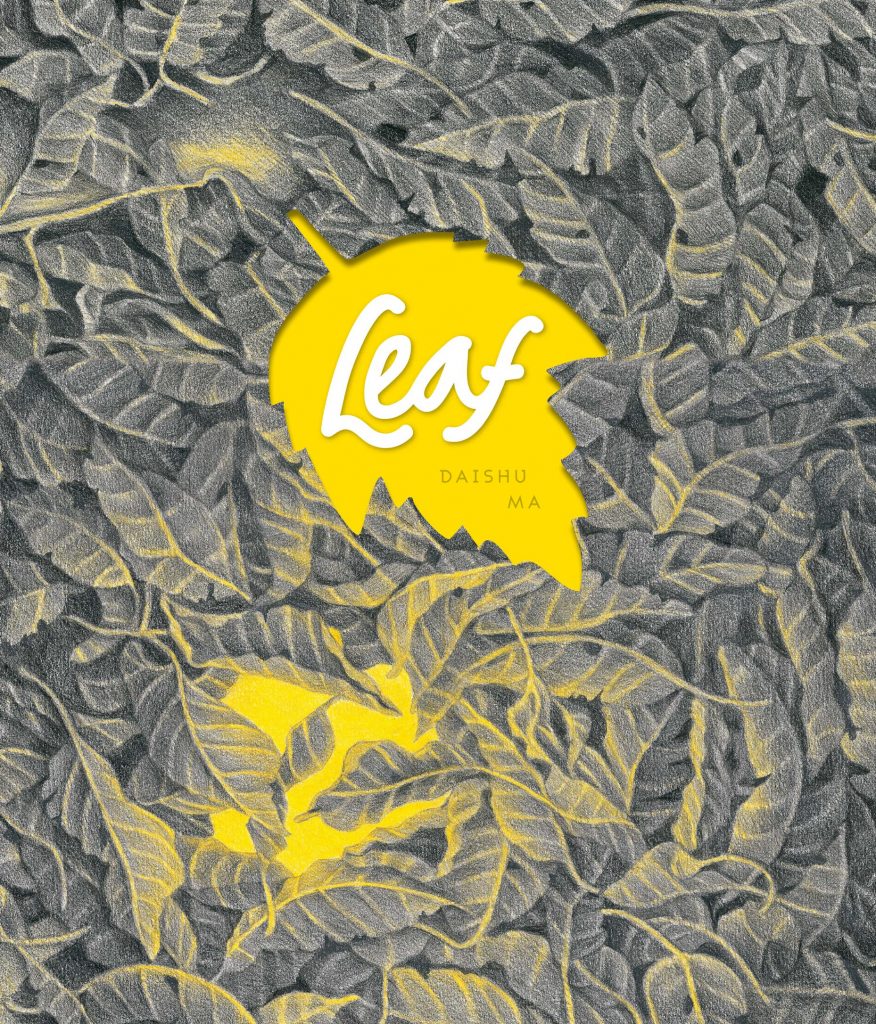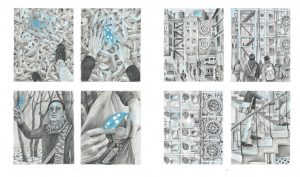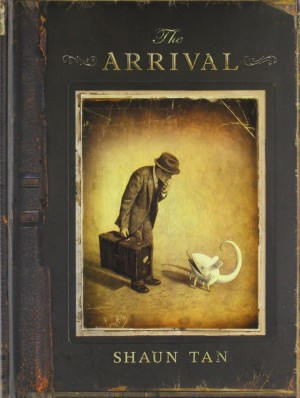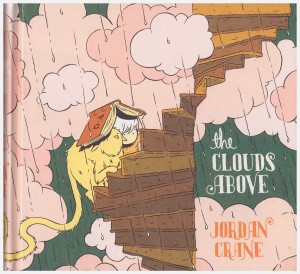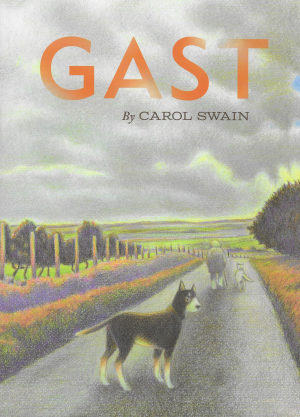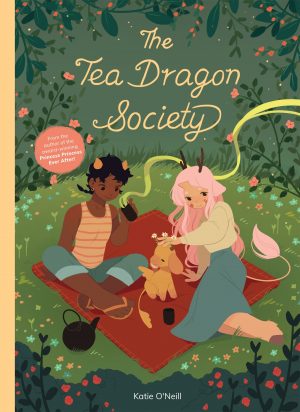Review by Ian Keogh
It might be considered an ambitious undertaking not only to dispense with any words for your first graphic novel, but also to centre it around a single, glowing leaf. Chinese artist Daishu Ma obviously thought otherwise, and her stunningly detailed pencil art leads us into a fable about the precarious balance of nature and technology.
As seen in the sample art, amid a pile of leaves a man comes across a single detached leaf glowing blue, just like every form of light in the city around him. It’s a puzzle, and he takes the leaf away with him before going on a journey around the city making discoveries about it and about how nature can be sustained in the most hostile of environments.
Ma’s art is going to make an obvious and stunning impression. Her characters and locations are beautifully detailed in greyscale pencils. She’s wonderful at depicting humanity via subtle emotional touches, and placing that against the cold nature of factory technology. Ma also incorporates clever visual tricks, often facilitated by her use of a nine panel grid page, and has a finesse about the construction of depressing working environments, one page an almost obsessively elaborated pastiche providing the horrors of the desktop workspace. The use of blue or yellow highlights as necessary is entrancing, yet can also add a sinister tone where required.
A superb evocation of Leaf is supplied by a cover, presumably the work of designer Jacob Covey, featuring the leaf shape cut out of the card cover to reveal a glowing yellow light surrounding the title beneath. It’s a motif repeated in the book where we glimpse through allegory to meanings that are open to different interpretations. That Ma is a Chinese artist is relevant, as when the story was produced her birth country posted excessive levels of pollution and there were few concerns about nature other than as a means of serving the population.
The lack of words creates a charm and a mood, but Ma doesn’t always clarify her intentions, and that so much of the what we read is open to interpretation eventually becomes frustrating. The leaf, first seen as blue and found in a city bathed in pastel blue light later turns yellow in different light. Does it adapt to atmosphere, or feeling? We never know for sure. Fantagraphics consider Leaf an all-ages experience, and perhaps it is, with younger readers more accepting about reading a succession of experiences providing no definitive answers. Loosening the logic strings and going with the flow opens a world of considerable charm, especially the stories told within the story. At one point we meet a woman who runs a small craft shop, and she relates how that developed from the wooden shack her father constructed to sell the plants he gathered. It’s a lovely, heartwarming vignette.
Leaf has a feeling of Ma wanting to say something without the courage to commit entirely to it, so employing a dreamlike structure to drop hints. It looks beautiful, but fails to satisfy completely.
